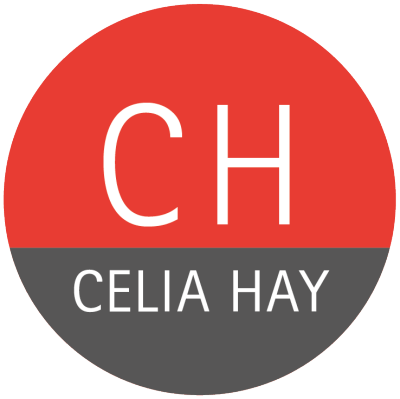Sir Joseph Banks of Banks Peninsula
- 3 January 2023
- Celia Hay
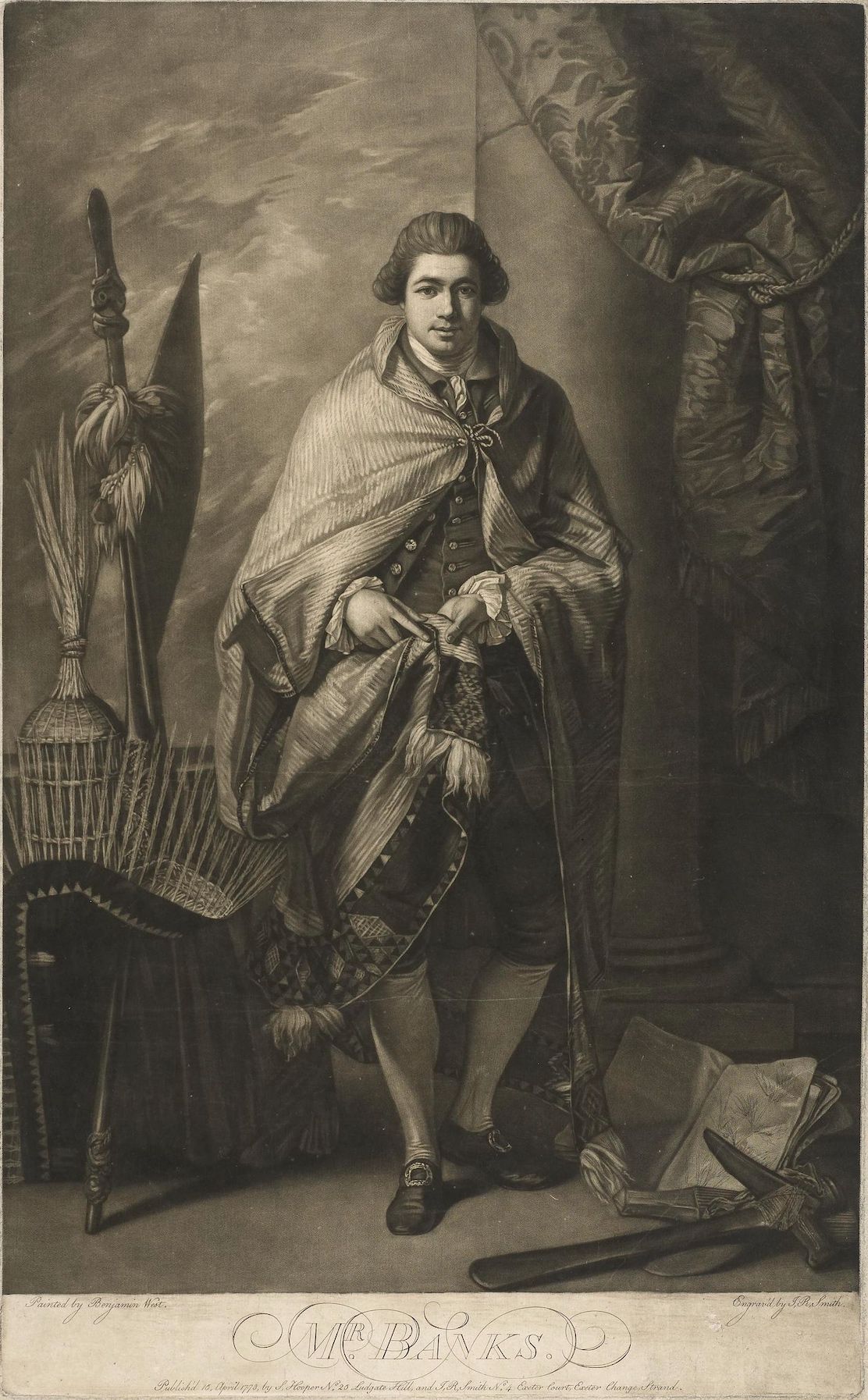
Sir Joseph Banks (1743-1820) by Benjamin West (1773)
I have known of Sir Joseph Banks all my life.
Akaroa, Banks Peninsula, where family had a holiday home, and later when I married a sheep and cattle farmer and settled in Pigeon Bay, Banks Peninsula, Sir Joseph Banks cast a long shadow from his world to ours.
As children, we also knew that Captain James Cook had mistaken Banks Peninsula for an island on his map of New Zealand in 1770. Banks Island, later Banks Peninsula was named after the botanist/naturalist on HMS Endeavour.

Toby Musgrave, 2020. The Multifarious Mr Banks; From Botany Bay to Kew, the natural historian who shaped the world is a fascinating book that brings together the multiple strands of Banks’ life in a way that is very relevant to us today as we seek out better understanding of our plant world.
Beyond the voyage of the Endeavour (1768-1771), that Banks undertook as a young man of 25 years, Musgrave details how he was able to apply his new knowledge in innovative ways over a long career. As the unofficial botanical advisor to the Royal Botantic Gardens, Kew, Banks would oversee Kew becoming the leading botanic garden of the world with an unrivalled collection of living plants.

The genus, Banksia, named in honour of Sir Joseph Banks. Pictured is Banks' Florilegium Banksia serrata - National Museum of Australia, Canberra.
Later, Banks became instrumental in the establishment and administration of the Penal Colony at Botany Bay, New South Wales from 1788. (Incidentally, Botany Bay was named by Cook in recognition of the “great quantity of plants Mr Banks and Dr Solander found”). Plants and seeds from Kew were shipped to Australia to help establish the first gardens and plantations in the new colony with the goal of achieving food self-sufficiency.
The journals of Banks and Cook along with records of this voyage, make fascinating reading and you can view digital copies of these at Victoria University of Wellington NZ Electronic Text Collection.
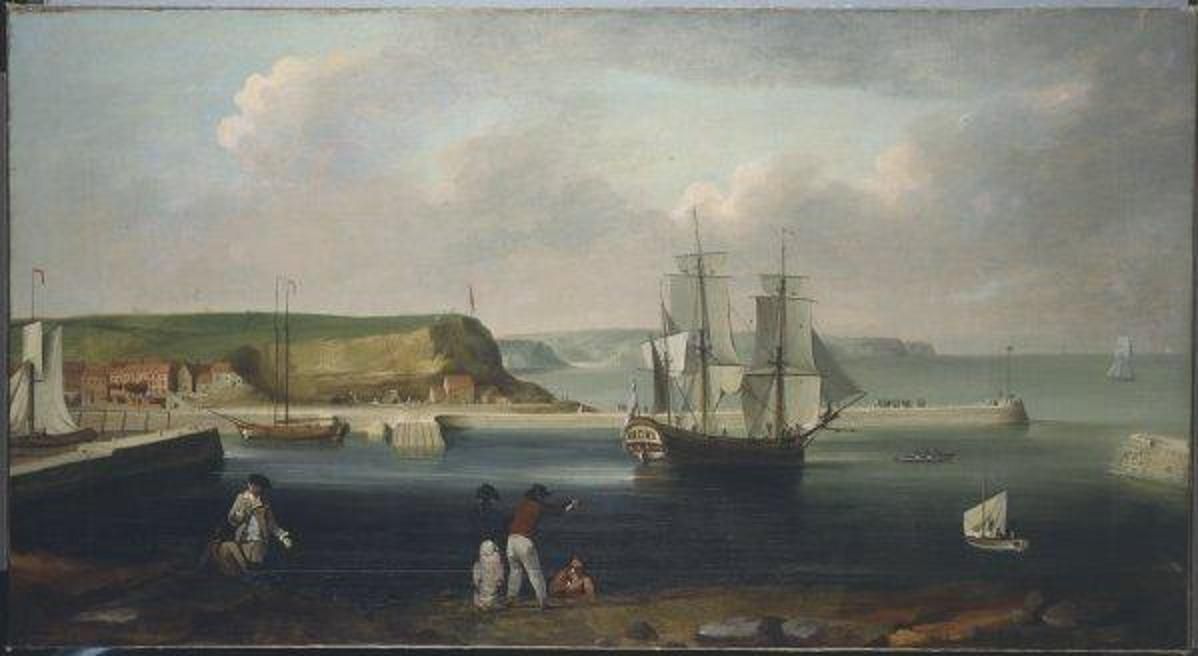
Painting of the Earl of Pembroke, later renamed HMS Endeavour, leaving Whitby Harbour in 1768.
HMS Endeavour voyage (1768-1771)
In New Zealand, we often only focus on the Endeavour’s journey around our coastline and forget the primary goal of the voyage was to observe and take readings of the Transit of Venus, an event that happens every 243 years with pairs of transit events after 121.5 years and 105.5 years. The distance between Earth and Venus could be established by using measurements from different locations and consequently the distance to the sun could be calculated.
In 1761, a transit event occured but the measurements were inconclusive, however another event was predicted to occur in June 1769. The Royal Society of London for Improving Natural Knowledge (1663) planned to send astronomers to observe the 1769 transit in a number of locations: Ireland, Cornwall, Hudson Bay in Canada, North Cape in Norway and in the Pacific. Tahiti was finally chosen in June 1768 and the Royal Navy ship Endeavour, under James Cook, would deliver the scientists to this destination. Cook was advised that following the Transit observation, he should open secret sealed instructions from the Admiralty. These instructions advised him to sail south and west in search of Terre Australis Incognita – the illusive Southern Continent.
Banks understood that this voyage would offer a unique opportunity to visit regions of the world previously unexplored and with his botanist-natural historian perspective, this was an opportunity not to be missed. In 1766, Banks had sailed to Newfoundland and Labrador on a scientific voyage and was familiar with the complexities of planning such a journey. Banks then set about convincing the Royal Society to expand the brief of their scientific work and enable his group to join the expedition.
In order to collect, study and record natural history specimens, Banks determined that he needed a team of eight people (including servants). Dr Daniel Solander (1773-1782) from Sweden, an outstanding natural scientist and former pupil of Carl Linnaeus (1707-1778), and his secretary Herman Sporing (1733-1771) from Finland, joined the group. Banks also invited two artists to join in order to illustrate and record their findings. Sydney Parkinson (1745-1771) as the botanical specialist and Alexander Buchan, who was focused on landscapes and people but died early in the voyage in 1769.
The Navy provided Banks' group with cabin space and food, but as a wealthy young man, Banks funded all the other expenses, including salaries, out of his personal income. These included: extra edibles, drinkables and luxuries, scientific equipment (nets, hooks, telescope, bottles, salts, spirits to preserve animals, wax), drying paper, presses, wooden boxes, wooden chests, tin cases with hinged lids and locks, an arsenal of pistols and rifles to shoot animals and birds...paper, oil, pigments for the artists plus a fine library of natural history books including Linnaeus' Systema Naturae Regnum Animale 12th ed (1766-7). Over 20 tons of equipment.
New Zealand - October 1769
From Tahiti, the Endeavour sailed sail south into the Roaring Forties (40 to 50 degrees latitude South, known for its windy conditions). On August 25, they celebrated the first anniversary of their journey. Banks noted in his journal: 'a piece of Cheshire cheese was taken from a locker where it had been reservd for this occasion and a cask of Porter tappd which provd excellently good, so that we lived like English men and drank the healths of our friends in England'.
With no success to the south, Cook turn the ship to the northwest. On October 6, 1769, land was sighted from the masthead and most of the crew, including Banks believed they had reached the Southern Continent. Landfall was at Te Oneroa, which Cook named Poverty Bay.
The first encounter with Māori was marred by the firing of guns that killed a chief. Following this altercation, Tupaia who had joined the Endeavour in Tahiti to help Cook as an interpreter and also with celestial navigation across the Pacific, was able to intervene and speak directly to improve relations.

Interpretation:'This is high priest and navigator Tupaia’s only known drawing of New Zealand. Tupaia played a crucial role in establishing good relations between Cook’s party and Māori in the first weeks in New Zealand. He was able to act as intermediary because the Māori language is from the same language group as Tahitian'. British Museum.
Banks and Dr Solander were then went ashore and commence botanizing, collecting trees and scrubs, insects and observing local customs.
'This morn Dr Solander and myself went ashore botan[i]zing and found many new plants…In our walks we met with many houses in the vallies that seemd to be quite deserted, the people livd on the ridges of hills in very slight built houses or rather shedds… their fishing tackle and lobster potts of which they have many must be brought up with no small labour. (Banks. Vol. 1 p.419)
On board, the young artist, Sydney Parkinson was busy sketching and painting the specimens discovered by Banks and Solander. The Endeavour then sailed north, stopping at Tolaga Bay. There are a number of images that we can still view from this period (see below).
Parkinson sketched over 1000 drawings, including watercolours of plants and animals during the voyage. His untimely death, aged 27 years, of dysentery during the Cape Town leg, resulted in many of his works being unfinished. Once back in London, Banks employed five artists and eighteen engravers from 1772-1784 to complete Parkinson's work. Herman Sporing also produced drawings during the voyage.
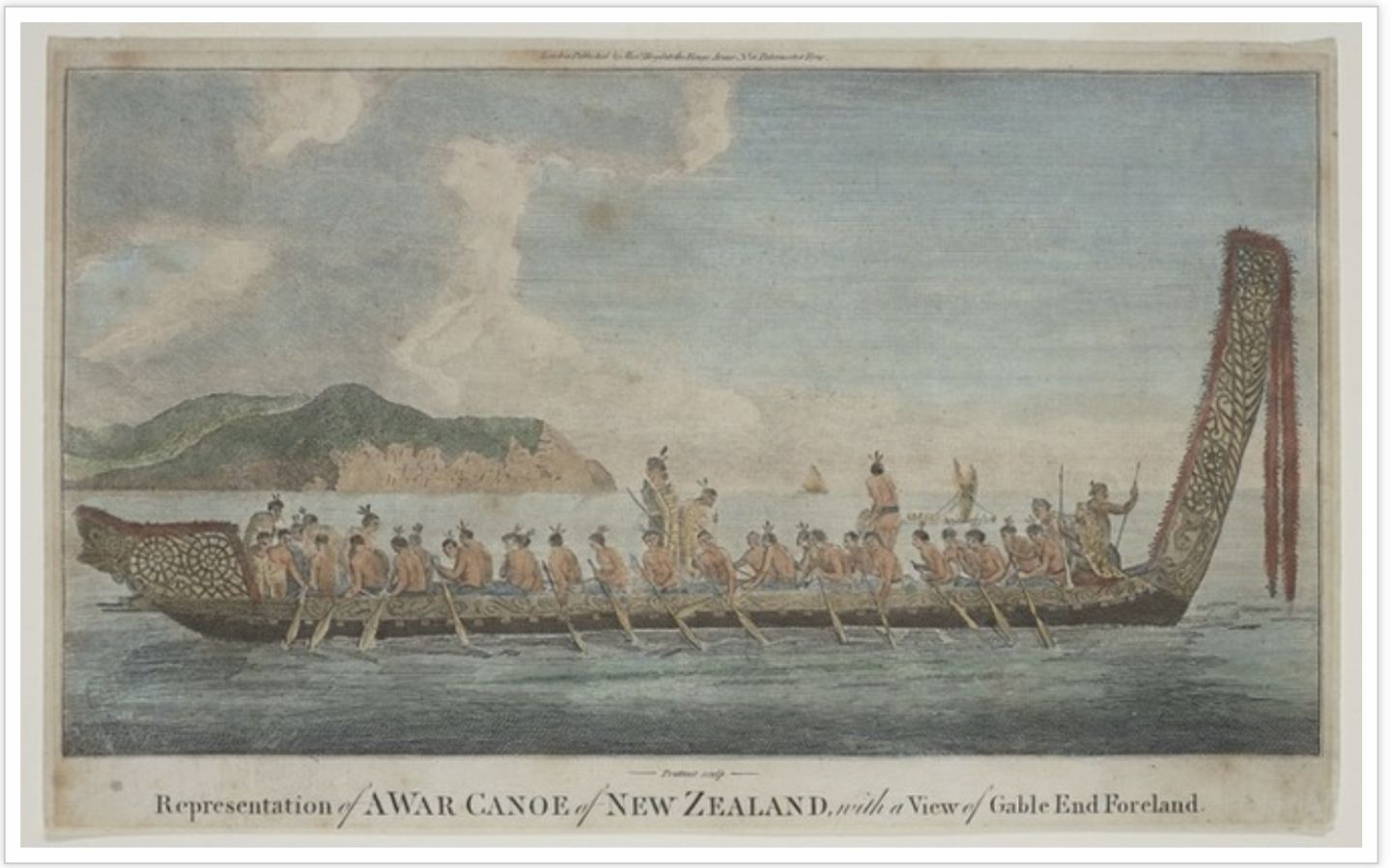
Parkinson, Sydney. Representation of a war canoe of New Zealand, with a view of Gable End Foreland. Alexander Turnbull Library, Wellington, New Zealand.
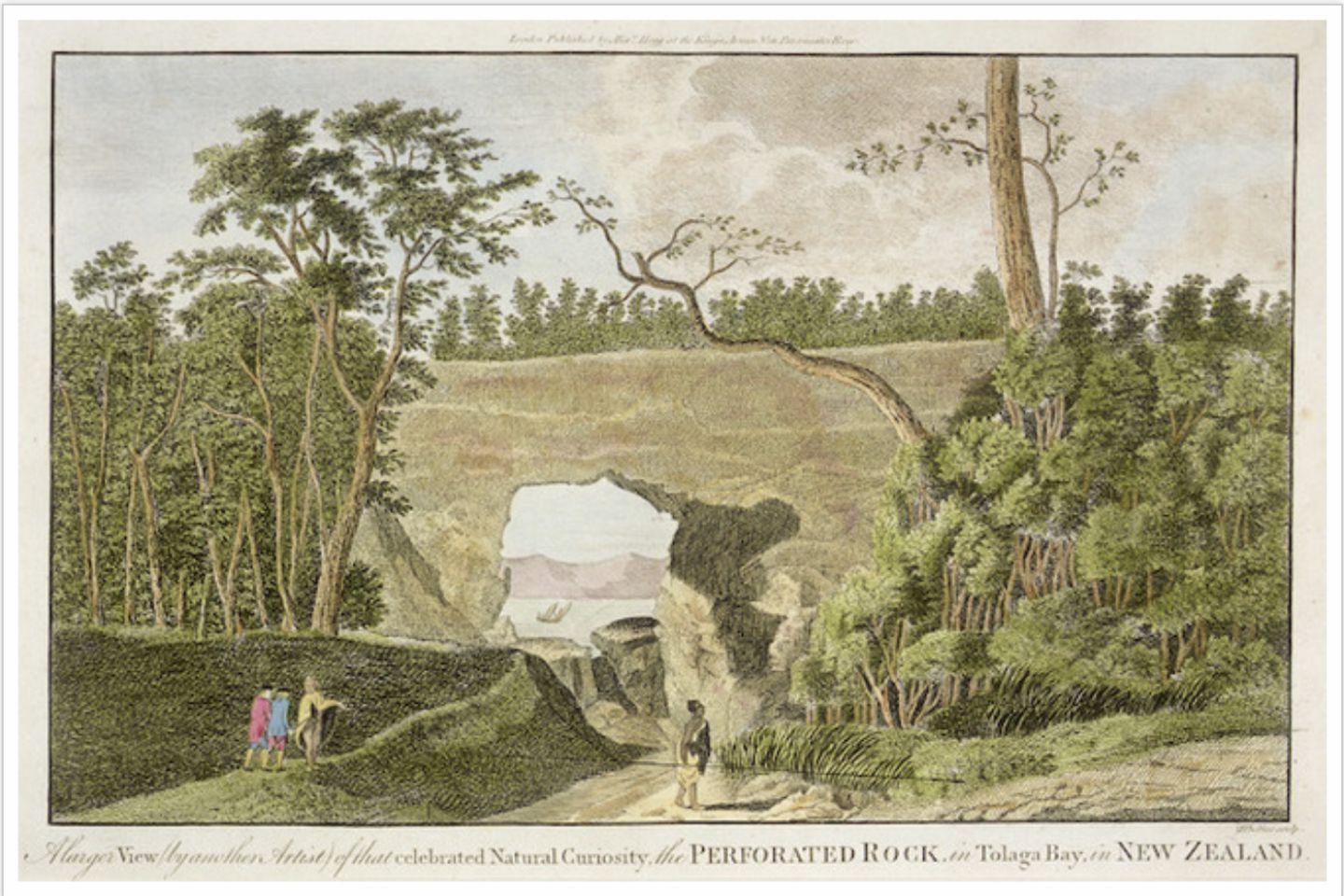
Sporing, Herman, ca 1730-1771 :A larger view (by another artist) of that celebrated curiosity, the perforated rock in Tolaga Bay.

Sporing, Herman 1733-1771 A fortified town or village, called a hippah, built on a perforated rock at Tolaga in New Zealand. [London, Strahan, 1773]. Ref: B-098-012. Alexander Turnbull Library, Wellington, New Zealand.
Interpretation of painting by National Library of New Zealand: Engraving from the official account of Cook's first voyage, based on a drawing of Te Puta o te Paretauhinau Pa at Mercury Bay, Coromandel Peninsula (not Tolaga Bay as claimed in the title). The drawing of the pa is by Herman Diedrich Sporing, Sir Joseph Banks' clerk; the canoe is copied from a drawing by Sydney Parkinson, the official artist aboard the Endeavour. The scene shows a boat from the Endeavour being rowed in the left foreground; a small canoe with five Maori engaged in fishing in the right foreground; an arched rock in the water behind the boats with a pa on top of it; two canoes pulled up on the bank to the right behind the arched rock and dense bush in the background.

Parkinson, Sydney. Fuchsia Excorticata – Kotukutuku. There are 106 recognised species and New Zealand has four of these.
Banks on foods in New Zealand
Below are direct quotes from the journal of Joseph Banks during Endeavour Voyage. I have quoted directly and the spelling and grammar belong to Banks. The page numbers in brackets refer to the relevant page in the digital version of which there are two volumes.
Vegetable Cultivation
'In sailing along shore we could clearly see several spots of land cultivated, some fresh turnd up and laying in furrows like ploughd land, others with plants growing upon them some younger and some older...' (Vol 1. p.409) Near Portland Island, off Mahia Peninsula, sailing south to what Cook called Hawk’s Bay
'Their food at this time of the year consisted of Fish with which instead of bread they eat the roots of a kind of Fern Pteris crenulata [New Zealand bracken fern], very like that which grows upon our commons in England. These were a little roasted on the fire and then beat with a stick which took off the bark and dry outside, what remaind had a sweetish clammyness in it not disagreable to the taste; it might be esteemd a tolerable food was it not for the quantity of strings and fibres in it which in quantity 3 or 4 times exceeded the soft part; these were swallowd by some but the greater number of people spit them out for which purpose they had a basket standing under them to receive their chewd morsels, in shape and colour not unlike Chaws of Tobacco.' (Vol 1. p.416) This quote is from the Poverty Bay/Mahia Peninsula area.
'Tho at this time of the year this most homely fare was their principal diet yet in the proper seasons they certainly have plenty of excellent vegetables, tho we have seen no sign of tame animals among them except doggs, very small and ugly. Their plantations were now hardly finishd but so well was the ground tilld that I have seldom seen even in the gardens of curious people land better broke down.
'In them were planted sweet potatoes, cocos [yams] and some one of the cucumber kind, as we judgd from the seed leaves which just appeard above ground; the first of these were planted in small lulls, some rangd in rows other in quincun all laid by a line most regularly, the Cocos were planted on flat land and not yet appeard above ground, the Cucumbers were set in small hollows or dishes much as we do in England. These plantations were from 1 or 2 to 8 or 10 acres each, in the bay might be 150 or 200 acres in cultivation tho we did not see 100 people in all. Each distinct patch was fencd in generaly with reeds placd close one by another so that scarce a mouse could creep through.' (Vol 1. p.417) This quote is from the Poverty Bay/Mahia Peninsula area.
'A little before sunset we went home with the Indians [Māori] to see them eat their supper. It consisted of fish, shell fish, lobsters and birds: these were dressd either by broiling them upon a skewer which was stuck into the ground leaning over the fire, or in ovens as we calld them at Otahite [Tahiti] which were holes in the ground filld with provision and hot stones and coverd over with leaves and Earth'. (Vol 1. p.430) This quote is from the Thames/Hauraki Gulf area.

Parkinson, Sydney. Merremia peltata - Convululous
Catching Lobsters
'Dr Solander who was today in a cove different from that I was in saw the natives catch many lobsters in a most simple manner: they walkd among the rocks at low water about middle deep in water and still felt about with their feet till they felt one, on which they divd down and constantly brought him up. I do not know whether I have before mentiond these lobsters but we have had them in tolerable plenty in almost every place we have been in and they are certainly the largest and best I have ever eat.' (Vol 1. p.434) This quote is from the Thames/Hauraki Gulf area.
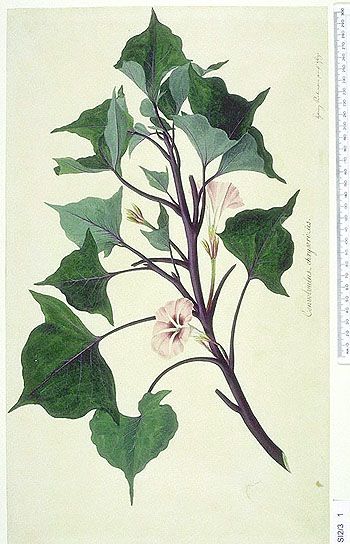
Parkinson, Sydney. Ipomoea batatus - Kumara
Solander, D. Pl. Otaheit.:34 - 35 'Convolvulvus chrysorhizus' ; Solander, D. Slip Catalogue V : 171 - 174; Banks, J. Cat. Pl.: 25. See Stearn, W. T. 1968 Endeavour XXVII: 6' fig. 4, col. pl.
Plantations of Yams/Cocos and fishing nets
'They then went and shewd us their plantations which were very large of Yamms, Cocos, and sweet potatoes; and after having a little laught at our seine, which was a common kings seine, shewd us one of theirs which was 5 fathom deep and its lengh we could only guess, as it was not stretchd out, but it could not from its bulk be less than 4 or 500 fathom. Fishing seems to be the cheif business of this part of the countrey; about all their towns are abundance of netts laid upon small heaps like hay cocks and thatchd over and almost every house you go into has netts in it making. (Vol 1. p.444). The Endeavour is sailing north, perhaps near the Bay of Islands at this time.
Cooking methods
'Simple as their food is their Cookery as far as I saw is as simple: a few stones heated hot and laid in a hole, their meat laid upon them and coverd with Hay seems to be the most dificult part of it. Fish and birds they generaly broil ) or rather toast, spitting them upon a long skewer, the bottom of which is fixd under a stone and another stone being put under the fore part of the skewer it is raisd or lowerd by moving that stone as the circumstances may require. The Fern roots are layd upon the open fire untill they are thouroughly hot and the bark of them burnt to a coal, they are then beat with a wooden hammer over a stone which causes all the bark to fly off and leaves the inside consisting of a small proportion of a glutinous pulp mixt with many fibres, which they generaly spit out after having suckd each mouthfull a long time'. (Vol 2. p.20)
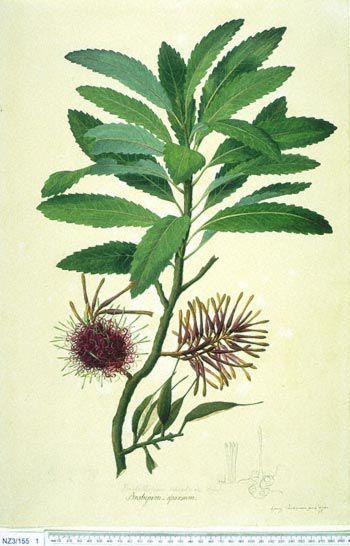
Parkinson, Sydney. Knightia excelsa - Rewa rewa
Solander D. Pl. Austral. [NZ] 1 : 67 - 68 '[[Brabeioides biflora]] Brabeium sparsum'; Solander, D. Slip Catalogue III: 659 - 664 See Beaglehole, J. C. 1962 2: pl.13; Allen, O. E. 1980:p. 136, col. pl.
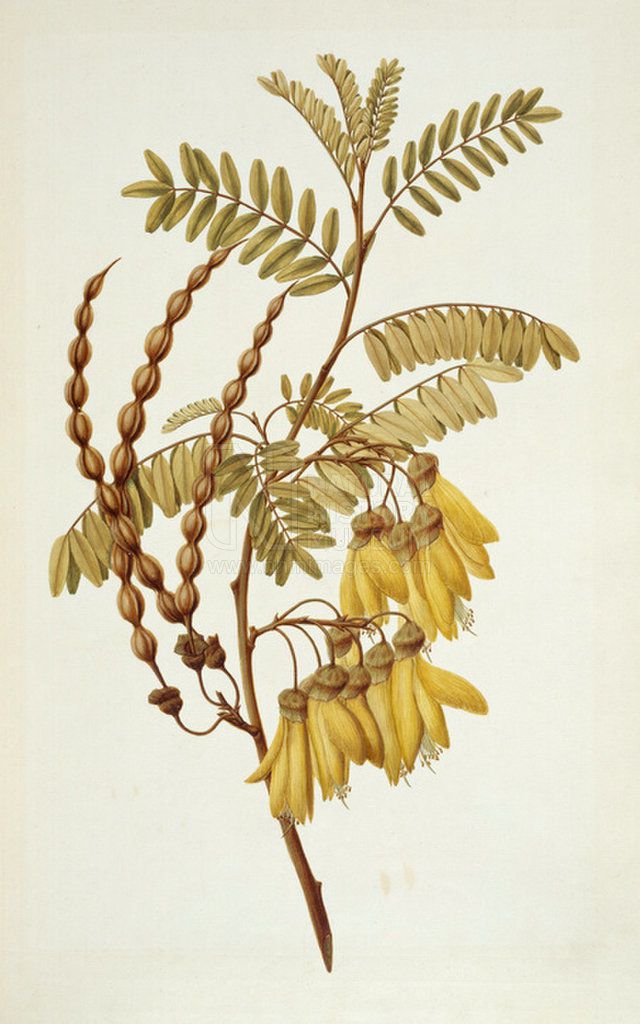
Parkinson, Sydney. Sophora Tetraptera - Kowhai can grow to 25 meters and in spring has brilliant yellow flowers that attract bellbirds and tuis.
Finished watercolour by Fred Polydore Nodder from an original outline drawing by Sydney Parkinson made during Captain James Cook's first voyage across the Pacific, 1768-1771.ID: 8126Credit: Trustees of the Natural History Museum, London
Pickled Cabbage Receipt (Recipe)
'Take a strong Iron bound cask for no weak or wooden bound one should ever be trusted in a long voyage, take out the head and when the whole is well cleand cover the bottom with salt. Then take the Cabbage and stripping off the outside leaves take the rest leaf by leaf till you come to the heart which cut into four; these leaves and heart lay upon the Salt about 2 or 3 inches thick and sprinkle Salt pretty thick over them and lay cabbage upon the salt stratum super thick till the cask is full. Then lay on the head of the cask with a weight which in 5 or 6 days will have pressd the cabbage into a much smaller compass. After this fill up the cask with more cabbage as before directed and Head it up. N.B. the Cabbage should be gatherd in dry weather some time after sun rise that the dew may not be upon it. Halves of cabbages are better for keeping than single leaves'. (Vol 1. p.249)
Sow thistle (Puha), cress, cabbage tree (Ti Kouka)
'Sow thistle [Sonchus oleraceus, Puha], garden nightshade, and perhaps 1 or 2 kinds of Grasses were exactly the same as in England, 3 or 4 kinds of Fern the same as those of the West Indies, and a plant or 2 that are common to almost all the world…
Eatable Vegetables there are very few. We indeed as people who had been long at sea found great benefit in the article of health by eating plentifully of wild Celery, and a kind of Cresses which grew every where abundan[t]ly near the sea side. We also once or twice met with an herb like that which the countrey people in England call Lambs Quarters or Fat hen, which we boild instead of Greens, and once only a Cabbage tree the Cabbage of which made us one delicious meal'. (Vol 2. p.8)
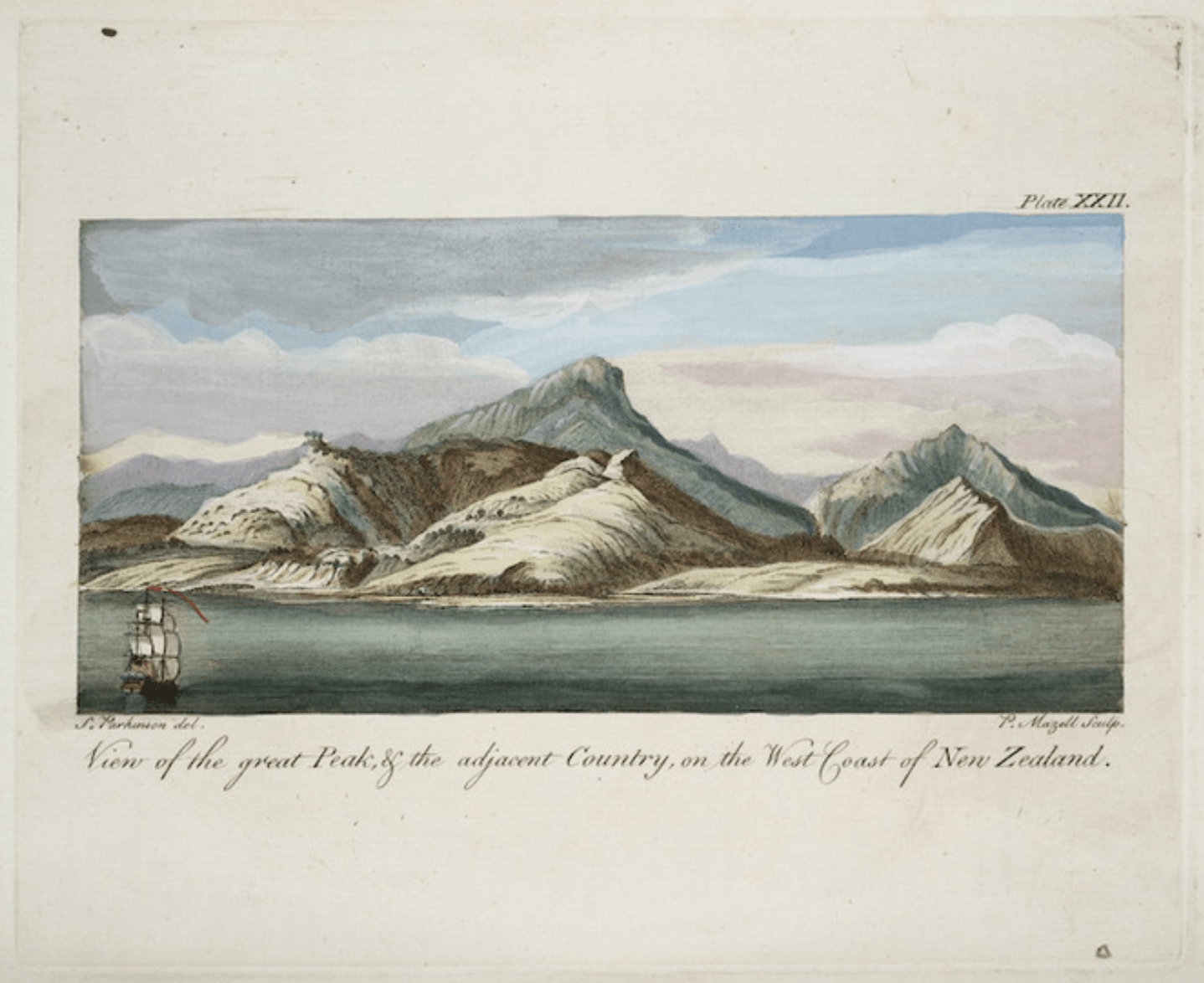
Mt Taranaki; Parkinson, Sydney, 1745-1771: View of the great peak & the adjacent country on the West Coast of New Zealand
Banks Peninsula (Island)
'This morn we were close onboard of the land which made in ridges not unlike the South Sea Islands (between the tropicks); the tops of these were bare but in the Valleys was plenty of wood. On the SE part was an opening which had all possible appearance of an excellent harbour [Akaroa] near this on the top of a hill we saw two people setting. Mr Gore notwi[th]standing Yesterdays run was of opinion that what he saw yesterday morning might be land, so he declard on the Quarter deck: on which the Captn who resolvd that nobody should say he had left land behind unsought for orderd the ship to be steerd SE.(Vol. 1 p.468). From Banks Island, the Endeavour sails further out to sea along the coast of the South Island.
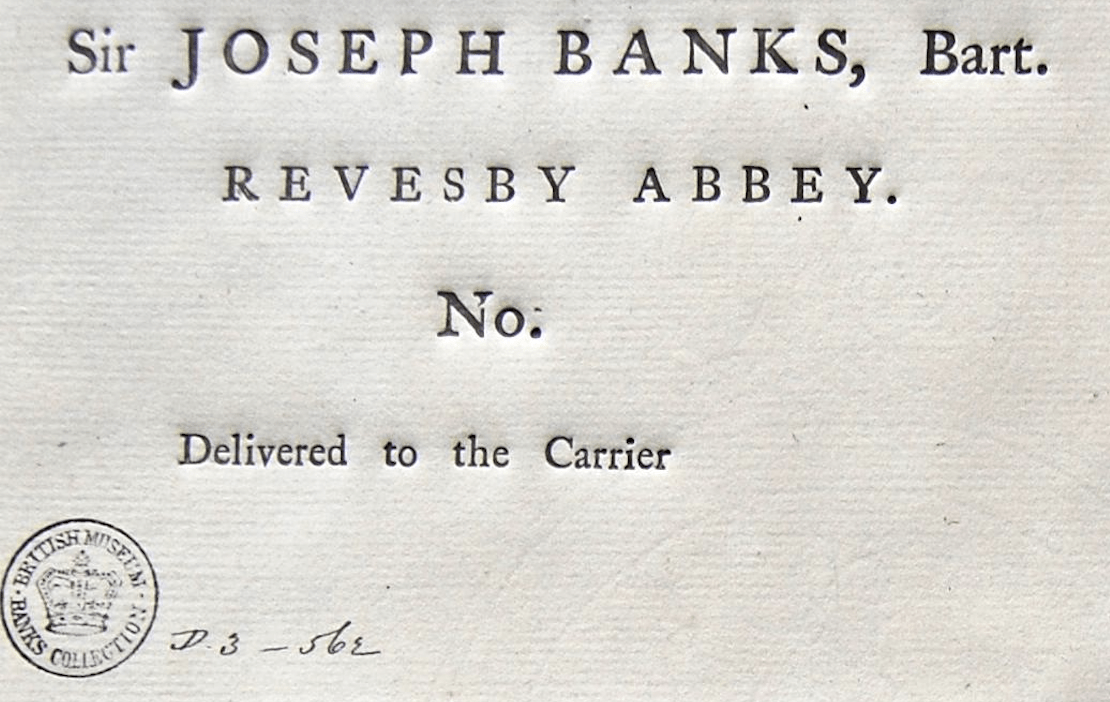
Sir Joseph Banks - Business Card from the British Museum.
Discover the art of Sydney Parkinson
Always with the view of publishing their discoveries, once in London and with Parkinson now dead and his drawings incomplete, Banks employed five artists and eighteen engravers from 1772-1784 to complete this work. Known as Banks’ Florilegium, with more than 700 engravings, the work was never published during Banks' lifetime. In fact, it was only in 1990 that a complete set, limited to 100 copies was published in colour, under the direction of the British Museum.
Today, the Museum of Natural History, London has a digital collection of the 700 engravings of Banks’ Florilegium which you can view here. High-resolution images are also available for purchase.
The botanist, Professor David Mabberley (2017) has written, Joseph Banks' Florilegium: Botanical Treasures from Cook's First Voyage which includes many of the colour plates with a commentary about the plants. This book is widely available in New Zealand.
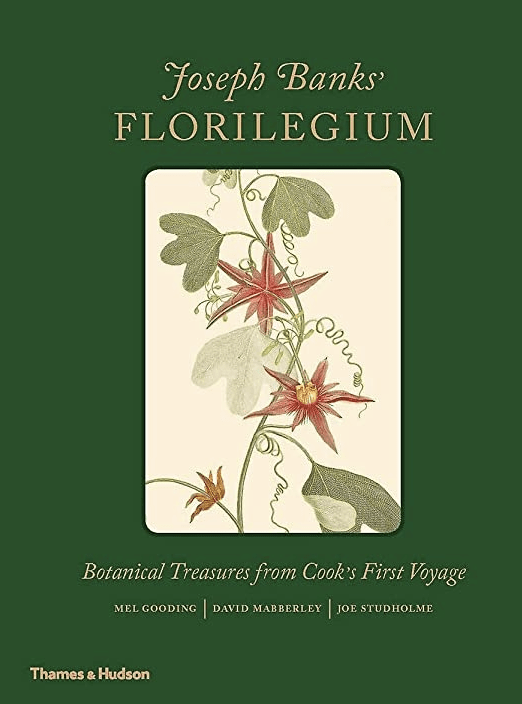
Celia Hay 4/1/2023

Akaroa Harbour, Banks Peninsula
